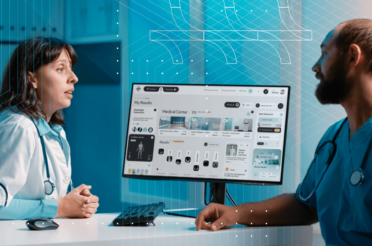In the realm of software development, there is always room for a beautiful software product, but we all know that this isn’t just about aesthetics; it’s also about functionality, user experience, and adaptability that align with the evolving needs of businesses and users.
Beautiful software is a combination of aesthetic appeal and superior functionality, delivering an intuitive and seamless user experience. It stands out for its robust performance, characterized by speed, reliability, and minimal errors, ensuring tasks are completed efficiently. The design of beautiful software is user-centric, focusing on ease of use, personalization, and accessibility across various devices and platforms. It continuously evolves through regular updates, adding new features and enhancements to meet the changing demands of users and industries. In this article, all of the characteristics above will be described in detail.
Why strive to define your software as beautiful?
Both the aesthetics and functionality significantly enhance user engagement and satisfaction, fostering a positive and lasting relationship with the product, which is key if you want to make your business successful. Beautiful software stands out in a crowded market, offering a competitive edge by providing a seamless, intuitive user experience that encourages loyalty. Moreover, the elegance and efficiency of beautiful software reflect a commitment to quality and innovation, attracting both users and developers who value excellence in their tools and solutions.
Here are the five key characteristics that define such beautiful software, according to the latest trends:
User-friendly and intuitive design
The most beautiful software programs are those that users can navigate intuitively. They are built with the end-user in mind, ensuring that every function and feature enhances the user experience. Software engineers prioritize a seamless, intuitive interface that minimizes learning curves and maximizes efficiency. The design strives to be clean, uncluttered, and easy to navigate. The primary functions – channels, direct messages, and mentions, which serve just as an example – are prominently displayed and accessible with a single click. It could also allow users to customize their experience in a way that best suits their workflow, so it adapts to their unique needs and preferences.
Robust functionality and regular updates
For software developers, the ability to write code that delivers powerful functionality is essential. However, it’s not just about the features available at launch; it’s about the commitment to regular updates and improvements. In various industries, the most revered software products are those that evolve through а continuous development processes, ensuring they meet the ever-changing demands of the business world. The consistently released updates are not just for security and bug fixes, but also to introduce cutting-edge features and enhance compatibility with the latest hardware and software components. That way users can have access to the most advanced tools in the creative industry while combining them with software.
Optimized performance with minimal errors

In software engineering, the goal is to create systems that perform efficiently and reliably under various conditions. This means minimal downtime, quick load times, and most importantly, few errors. A beautiful software product is one where developers have invested significant time in writing and testing the code to ensure it functions smoothly, enhancing the user’s ability to complete tasks without interruption. Google’s search engine is a prime example of optimized performance with minimal errors. The platform processes billions of queries every day, delivering relevant results in fractions of a second. Its infrastructure is designed to handle an immense load, ensuring quick, reliable access at any time, from anywhere in the world. The algorithms are continually updated to not only speed up search results but also to maintain accuracy and relevance, minimizing the occurrence of errors or irrelevant information.
Compatibility with various systems and hardware components
The beauty of a software product also lies in its ability to function seamlessly across different platforms and integrate with a range of software and hardware parts. This flexibility makes it a valuable tool for businesses that operate across various industries, making sure that their software components remain interconnected and efficient. To enhance this description, we can add that if users can access, edit, and share their documents, presentations, and spreadsheets from any device, be it a desktop computer, a tablet, or a smartphone, it would make the experience easier for them.
Furthermore, it could support various file formats, allowing users to import and export documents effortlessly through a single app, for example. It could also be designed to work in tandem with peripheral devices such as printers, scanners, and projectors, ensuring that users can perform a comprehensive range of tasks without compatibility issues.
Scalability and adaptability
The digital world is ever-changing, and software needs to adapt to new trends and technologies. Beautiful software is not static; it’s designed with the future in mind. Developers write code that is modular and scalable, allowing for the easy integration of new features and functionalities. Scalable and adaptable software offers a vast array of services, including computing power, storage options, and networking capabilities, all designed to scale with the needs of businesses, from small startups to global enterprises. Its flexibility allows businesses to experiment and innovate swiftly, adjusting their IT resources to align with market trends without the need for significant upfront investment in physical hardware.
We asked our programmers, what they think is the most beautiful software, and here is what they had to say on the subject matter:
Bojidar Markov, R&D Manager:
I find space programs cool. For example, software for space shuttles. Or no, NASA’s Mars rover Curiosity, which is a space program, because it’s on Mars. In brief, I like the software which is written for that robot.
Philip Nikolov, Developer:
Each software is beautiful in its own way. To me, the most beautiful software is not one program only. It’s all of those programs that make our lives easier, safer, and funnier of course.
Harry Birimirski, Solutions Architect:
I think every software must be workable and then beautiful. In my opinion, the most complicated and well-developed software of all time is prt4u.com. Released many years ago, it still works on old-school asp.net 2.0.
Viktor Velev, Senior Developer:
A redhead girl. Just kidding. From my perspective, no software is ‘most beautiful.’ Each product requires constant care (bug fixing, new features, and so on) to keep it alive and beautiful.
To sum up, beautiful software possesses value and qualities that distinguish it from software that is simply well-functioning. The superiority of such development over another is driven by characteristics that transform it into something usable, accessible, ground-breaking, and last but not least, something that pleases the human eye while indulging users’ hunger.














